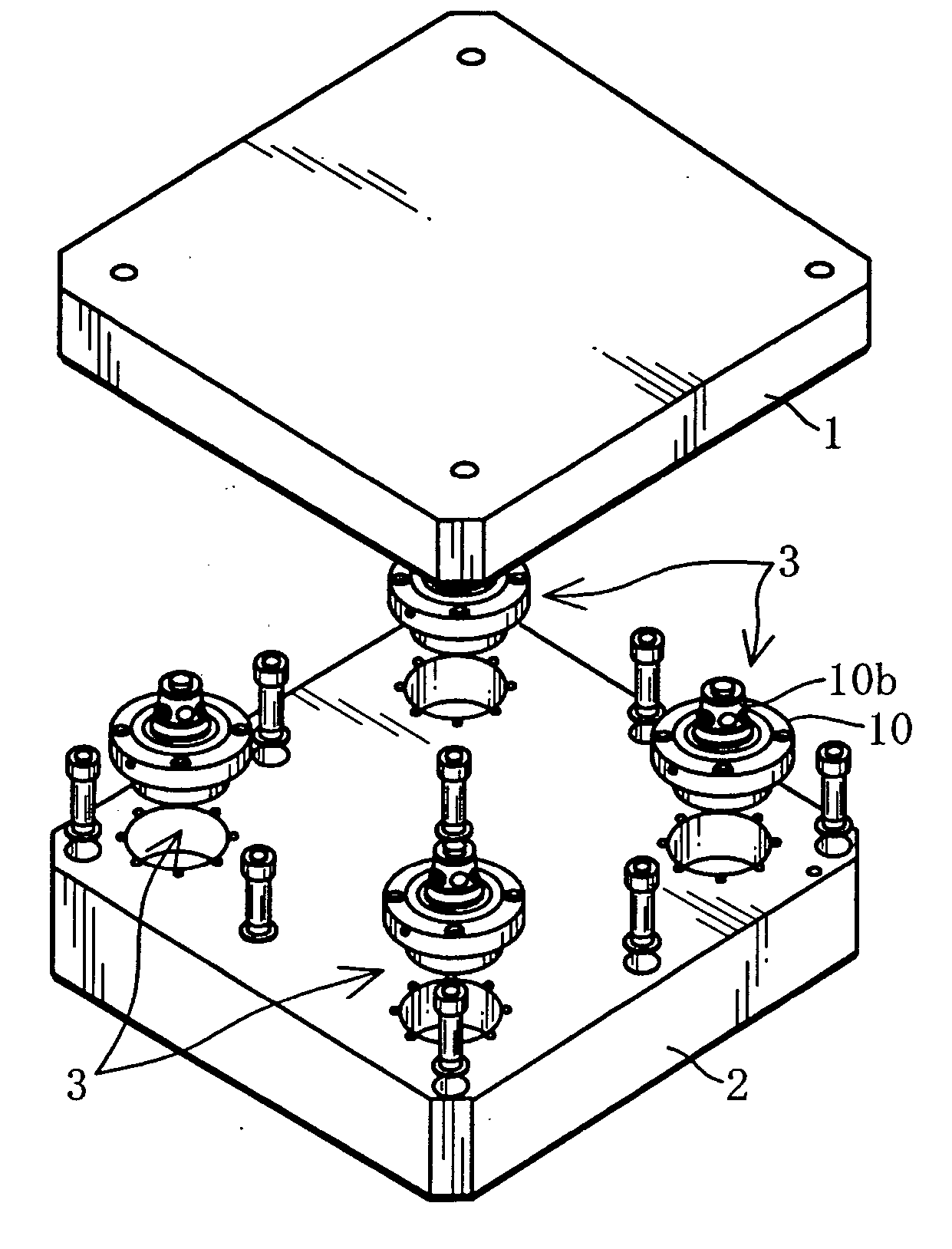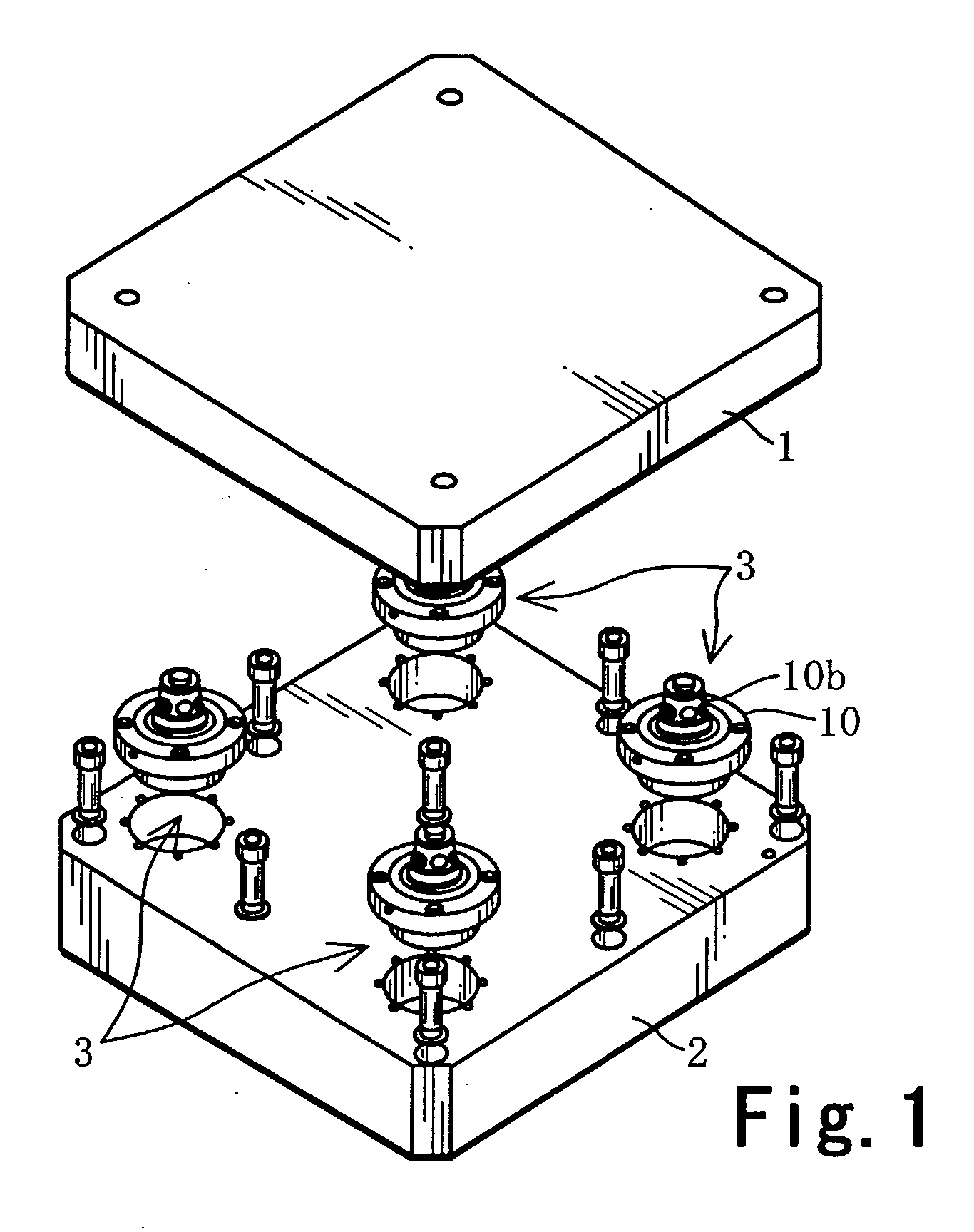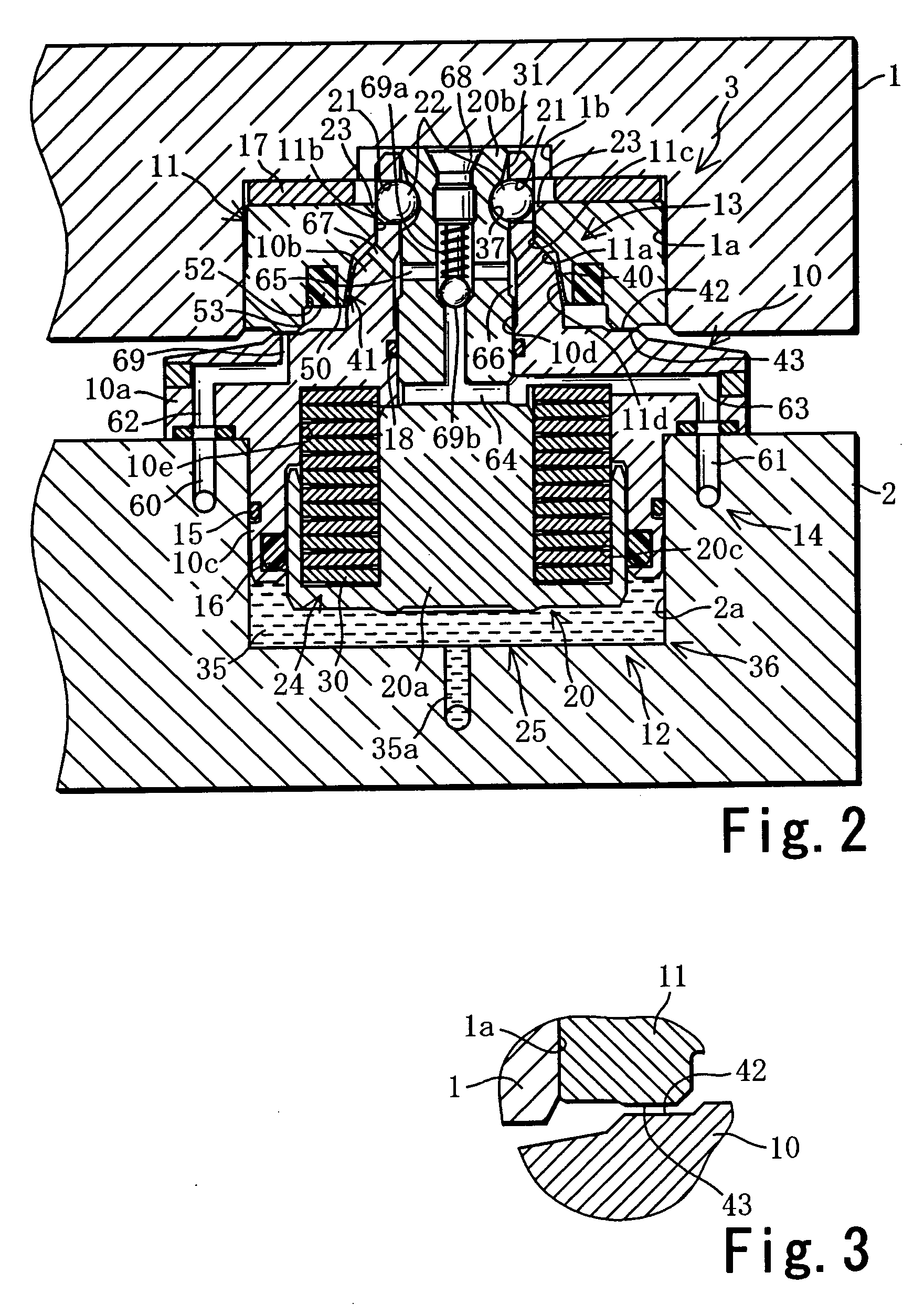Positioning and Clamping Device and Positioning Device
a clamping device and positioning device technology, applied in the direction of manufacturing tools, metal-working machine components, shaping tools, etc., can solve the problems of increasing production costs, affecting the machining accuracy of workpieces, and the number of parts, so as to facilitate the elastic deformation of the engaging mechanism, increase accuracy, and appropriate rigidity
- Summary
- Abstract
- Description
- Claims
- Application Information
AI Technical Summary
Benefits of technology
Problems solved by technology
Method used
Image
Examples
Embodiment Construction
[0042] The best mode for putting this invention into practical use are described hereafter, with reference to the drawings. As shown in FIG. 1, a work pallet 1 (a clamping object), on which a work piece to be machined is fitted, is positioned and clamped to a base member 2, fixed to the table of a machining tool by means of four sets of positioning and clamping devices 3. Then, the work piece on the pallet 1 is machined. Pallet 1 is made of a nearly square thick plate, and base 2 is made of also a nearly square thick plate. Base 2 can be the table of a machining tool. The four sets of positioning and clamping devices 3 are provided in the four corners of the square pallet 1 and base 2.
[0043] The positioning and clamping device 3 will be described next.
[0044] The four sets of positioning and clamping devices 3 have the same structure; therefore, only one of positioning and clamping devices 3 is described.
[0045] As shown in FIGS. 2, 4, and 6, the positioning and clamping device 3 c...
PUM
 Login to View More
Login to View More Abstract
Description
Claims
Application Information
 Login to View More
Login to View More - R&D
- Intellectual Property
- Life Sciences
- Materials
- Tech Scout
- Unparalleled Data Quality
- Higher Quality Content
- 60% Fewer Hallucinations
Browse by: Latest US Patents, China's latest patents, Technical Efficacy Thesaurus, Application Domain, Technology Topic, Popular Technical Reports.
© 2025 PatSnap. All rights reserved.Legal|Privacy policy|Modern Slavery Act Transparency Statement|Sitemap|About US| Contact US: help@patsnap.com



